I’m Back
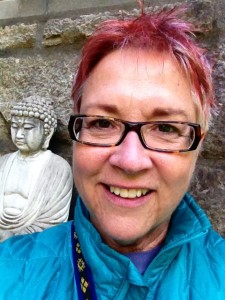 I’m back from the retreat with Mirabai and I have lots to share…but I think, for today, I’ll save the words and just post a few pictures.
I’m back from the retreat with Mirabai and I have lots to share…but I think, for today, I’ll save the words and just post a few pictures.
Here’s me, outside the monastery, which as you can see, has had a few changes since it was built by Capuchin monks in the 1930s.
 Here’s what you see when you stand with your back to the door, looking out across the lawn to the Hudson River.
Here’s what you see when you stand with your back to the door, looking out across the lawn to the Hudson River.
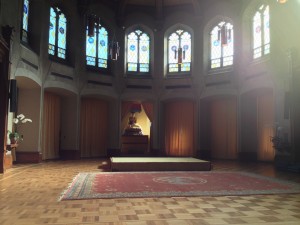 Here’s part of the sanctuary, where we met every morning…with a gold Buddha!
Here’s part of the sanctuary, where we met every morning…with a gold Buddha!
 And here’s me again. So happy to be there.
And here’s me again. So happy to be there.
Back on Tuesday
 I’m leaving early tomorrow morning to fly to New York, to meet with my first meditation teacher, Mirabai Bush, and to attend the Contemplative Retreat for Educators she’ll be leading.
I’m leaving early tomorrow morning to fly to New York, to meet with my first meditation teacher, Mirabai Bush, and to attend the Contemplative Retreat for Educators she’ll be leading.
I’m not an Educator, but Mirabai said it was OK. I attended two years ago and met lots of fascinating people, all doing very interesting work using contemplative practices to teach courses in a wide range of disciplines…this is where I learned the Now I See method I’ve been posting about….but really, I’m just going to be able to sit with Mirabai.
The retreat is held at the Garrison Institute. It’s in a beautiful, former monastery in Garrison, New York, located on the bluffs overlooking the Hudson River, about an hour north of New York City. I’ll take a train from Grand Central Station that goes right along the river all the way up to Garrison. (Which alone is almost worth the trip.) The retreat starts Thursday at dinner and goes through lunch on Sunday. (The food is awesome.) Then I’ll be staying over for a day of practice.
I’ll post about it all when I get back on Tuesday.
Stay tuned.
The Edge
One of Phillip Moffitt’s DharmaWisdom e-Teachings arrived in my e-mail today. They seem to come randomly, every couple of months, but somehow they always manage to say exactly what I need to hear at that particular moment. (Click here if you’d like to subscribe.)
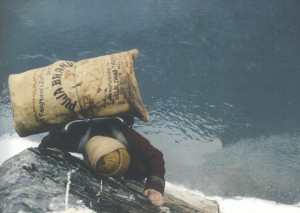 This one is on Practicing Your Edge. Here’s an excerpt:
This one is on Practicing Your Edge. Here’s an excerpt:
What does it mean to go “to the edge” in your spiritual practice? The edge is the point of your maximum ability–it isn’t something beyond your capability. Still, when you’re approaching your edge, you may be unsure of how much farther you can go.
One place you may experience this type of precipice is during your formal practice. Practicing at your edge may mean going for longer retreats, sitting longer, sitting without moving, sitting with pain, or sitting with loving-kindness. You could choose to challenge yourself during any part of your practice. At home, simply carving out time away from family obligations may be your edge. Or maybe for you the edge of your practice is living the dharma on a daily basis.
Your edge might be renouncing wanting mind, coming to terms with the fragility of life, being present, truly accepting “don’t know mind,” or abandoning a piece of your old lifestyle. There are so many possibilities you can explore. You may be tempted to choose an “edge” which really isn’t your edge because it feels good to do something you’ve already mastered. The problem with not working toward your edge is that your spiritual practice will stall.
When you’re truly at your edge, do not take unnecessary risks. You’re already at your edge so there’s no need to compound it. As you approach the edge, pay attention to your body and mind. Are you going too far? Do you feel fatigued? Ask yourself if you’re really committed to this level of edginess. If you’re not, pull back. At this point, pushing yourself to keep going is just ego creation and is harmful to the self. Beware of artificial pride keeping you on the edge. Do you know you should pull back but you’re too proud to do so? Is fear keeping you frozen on the edge?
Likewise, make sure that going to your edge is not something you’re doing to feed your ego. You don’t go to your edge in order to get a certain outcome, because lots of time when we’re at the edge, the outcome isn’t what we expected.
Want more?
Click here to have e-Teachings sent to you.
(image from “Offerings,” by Danielle and Olivier Follmi)
Revolutionary Approach
Tonight is the Dancing with Life KM Group. We’ve moved into Book Two: The Second Noble Truth (which, basically, says that the stress in our lives is caused by insisting that things be the way we want them to be, instead of they way they actually are.)
I’ve highlighted just about all of Chapter 8, but the passage I’m bringing to discuss tonight is:
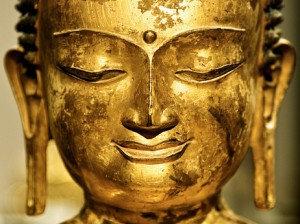 Craving [insisting that things to be the way we want them to be] creates an illusion, a misperception, a deluded mental reaction, which causes the mind to contract into stress and anxiety. If this state is avoided or released, the mind is naturally calm and luminous.
Craving [insisting that things to be the way we want them to be] creates an illusion, a misperception, a deluded mental reaction, which causes the mind to contract into stress and anxiety. If this state is avoided or released, the mind is naturally calm and luminous.
The three Insights of the Second Noble Truth thus represents a revolutionary approach to spiritual development–the utilization of awareness and observation to bring freedom without reliance on beliefs or rituals of any sort.
(from page 76-7, hardback edition…emphasis mine)
I chose this passage because (1) I am drawn to the assertion that our natural state of mind is calm and luminous. (As opposed to the idea that we are naturally “sinful”.) And (2) I am so glad to have been shown a way to understand my life…in a deep and profound way…without also being asked to check my brain at the door.
All Are Welcome
 The Saturday morning Sitting in the Park meditation group will be….well, sitting in the park!….tomorrow morning (unless it’s pouring down rain) near the Tower Grove Farmers’ Market from 8:30 to 9:00 am. No chanting. No dharma talk. Just sitting.
The Saturday morning Sitting in the Park meditation group will be….well, sitting in the park!….tomorrow morning (unless it’s pouring down rain) near the Tower Grove Farmers’ Market from 8:30 to 9:00 am. No chanting. No dharma talk. Just sitting.
We’ll be there tomorrow, and the rest of the Saturdays in October. But our last sit of the year will be November 3 (when the Market closes). So join us while you can. All are welcome.
Including your monkey mind!
Don’t Limit Yourself
Last night I opened the Hi-Pointe Sitting Group with this excerpt from Wild White Horses, by Laurie Anderson.
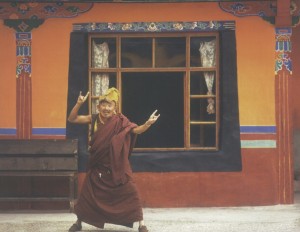 In the Tibetan map of the world, the world is a circle, and at the center there is an enormous mountain guarded by four gates. And when they draw a map of the world, they draw the map in sand, and it takes months and then when the map is finished, they erase it and throw the sand into the nearest river.
In the Tibetan map of the world, the world is a circle, and at the center there is an enormous mountain guarded by four gates. And when they draw a map of the world, they draw the map in sand, and it takes months and then when the map is finished, they erase it and throw the sand into the nearest river.
Last fall the Dalai Lama came to New York City to do a two-week ceremony called the Kalachakra, which is a prayer to heal the earth. And woven into these prayers were a series of vows that he asked us to take and before I knew it, I had taken a vow to be kind for the rest of my life. And I walked out of there and I thought: “For the rest of my life?? What have I done? This is a disaster!”
And I was really worried. Had I promised too much? Not enough? I was really in a panic. They had come from Tibet for the ceremony and they were walking around midtown in their new brown shoes and I went up to one of the monks and said, “Can you come with me to have a cappuccino right now and talk?” And so we went to this little Italian place. He had never had coffee before so he kept talking faster and faster and I kept saying, “Look, I don’t know whether I promised too much or too little. Can you help me please?”
And he was really being practical. He said, “Look, don’t limit yourself. Don’t be so strict! Open it up!” He said, “The mind is a wild, white horse and when you make a corral for it, make sure it’s not too small. And another thing: when your house burns down, just walk away. And another thing: keep your eyes open.
And one more thing: Keep moving. Cause it’s a long way home.”
(image from “Offerings,” by Danielle and Olivier Follme)
En-Chanting
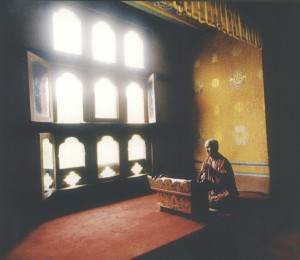 For a while now, I’ve been really interested in Pali chants.
For a while now, I’ve been really interested in Pali chants.
Last week, I posted the Pali Homage and Refuges chat I use to open the Hi-Pointe Sitting Group. And last night, at Maplewood Metta, I played a tape of Jesse Vega-Frey leading a group of yogis (people on retreat) in chanting the Pali Karaniya Metta Sutta. (It’s only 5 minutes long. You can listen here.)
This morning, I downloaded a gorgeous recording of Ven. Omalpe Sobitha Thero (a Sri Lankan monk) chanting the entire Satipatana Sutta, in Pali. I’ve been listening to the first 4 minutes…over and over…since hearing it played as part of a talk given by Greg Scharf. (You can listen to the talk here.)
The entire Satipatana chant is available here (scroll down). The quality of the recording is extraordinary…and the sutta is long….so the chant has been recorded in 3 parts (plus a spoken intro). The whole sutta lasts more than an hour. But even if you just listen to the first few minutes, it can be a truly transportive experience.
Enjoy!
(image from “Offerings,” by Danielle and Olivier Follmi)
Guanyin Again
I went back to look again at Guanyin on Sunday. This was my 7th of the 13 visits I plan to make, each time writing a page or two in my “Now I See” journal. Here’s what I wrote:
 Now I see soot on the tips of her fingers. Has she been in a fire? Was it candles? Smoking incense? She is made of wood, so right away I sense danger. Those tender fingers seem impossibly long, eminently vulnerable. They rest, yet seem to ripple, like waves on the ocean, or grass, but more alive, serpent-like almost, but without menace. Her hand, like the rest of her pose, is relaxed, yet reaches out. Not moving, it is the embodiment of potential motion.
Now I see soot on the tips of her fingers. Has she been in a fire? Was it candles? Smoking incense? She is made of wood, so right away I sense danger. Those tender fingers seem impossibly long, eminently vulnerable. They rest, yet seem to ripple, like waves on the ocean, or grass, but more alive, serpent-like almost, but without menace. Her hand, like the rest of her pose, is relaxed, yet reaches out. Not moving, it is the embodiment of potential motion.
But that soot! Surely this was not intended. It suggests age. Fragility. Wear. And use. She was not kept away from life. Protected. There is roughness. And a worn quality that adds its own patina.
I imagine the artist, sanding those fingers. Rubbing, caressing, stroking. How intimate! Now I see the sensuality of those curves, the tender spaces between the fingers, the exposed openness of the palm. And now the possibility of holding hands with this — goddess? — has suddenly appeared with such visceral awareness! The act of her creation must have been, quite literally, an act of making love.
Now I see that her fingers, so alive, seem to be reaching out, responding, ready at any moment to return the caress. And now the fact that her hand is soiled makes that potential seem all the more vivid. I can look at her closely like this from the side, but when I step to the front, I feel too bold. She seems to watch me, with eyes almost closed, and I feel impertinent. Out of bounds. She lets me look. But she sees that I see. And this causes me step away.
How sentient she seems, and yet I know that she is not. It’s a projection of my own mind, of course. A story made up from the arrangements of features, the shape of limbs, the form of hands. She is carved from wood. Which, in fact, was once living…in the form of a tree. Not conscious. But alive. Then the tree became wood. And the wood became what I see in this moment. Which eventually will decay, turn back into carbon and oxygen. Which will then be taken up again, into another form. Perhaps human. Perhaps not.
But now I do not see a piece of wood. And certainly not a tree. I see a human-like form. One that my mind responds to by making associations and projections. Which is not to say that there is anything wrong. When I look at her, I am seeing the workings/habits/skills (even) of my mind. Of this midstream…if you want to get all Buddhist about it.
Looking at her, I see myself. This particular human incarnation. The causes and conditions that have brought “me” here, that have resulted in my seeing what it is that I see when I look at her.
So she is me. And I am her.
Together we respond to the world, with eyes half-open. And fingers, dark with soot.
Dharma TV
The Compassionate Brain
Rick Hanson, author of Buddha’s Brain, will host a 7-part video series called The Compassionate Brain. The series begins tonight, 7-8pm Central time and will continue for the following seven Monday nights. Each week, he will discuss the power of neuro-plasticity with world-class teachers: Richie Davidson, Dan Siegel, Tara Brach, Dacher Keltner, Kelly McGonigal, Kristin Neff and Jean Houston. You can watch live or view archived videos by clicking here.
Open Your Heart, Be the Change
Qigong Master Mingtong Gu will host an on-line series of conversations with respected thought leaders: James Baraz, Sharon Salzberg, Jean Houston, James O’Dea, Marci Shimoff, Janet Attwood, Norm Shealy and others. Beginning Tuesday, Oct 16, 3:30-4:30pm Central time, watch live or view archived videos here.
Mindfulness at Work
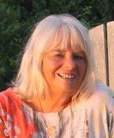 My very first introduction to Mindfulness meditation — to any meditation, for that matter — was at a 3-day silent retreat offered by the company I worked for at the time: Monsanto. Strange, I know. But it was a life-changing experience….mainly, I think, because the teacher was Mirabai Bush.
My very first introduction to Mindfulness meditation — to any meditation, for that matter — was at a 3-day silent retreat offered by the company I worked for at the time: Monsanto. Strange, I know. But it was a life-changing experience….mainly, I think, because the teacher was Mirabai Bush.
Mirabai is the Founding Director of The Center for Contemplative Mind in Society (just to name one of her incarnations). And she has recently teamed with More Than Sound to offer a FREE, monthly webinar series on the benefits of mindfulness in the workplace.
The next webinar will be Thursday, Oct 11 at 2:00 pm Central Time. It will feature a live discussion between Mirabai and Dr. Kyra Bobinet, President of Senior Care Solutions at Aetna. You can register for it here, or view a streaming video shortly after the webcast here.
The webinar will cover:
* Dr. Bobinet’s best practices learned from developing and leading Aetna’s clinical efficacy studies with the company’s mind-body stress reduction programs
* Discussion of Aetna’s Mind-Body Stress Reduction in the Workplace clinical trial, and the study results that were published in the Journal of Occupational Health Psychology
* Mirabai Bush’s experience with developing the curriculum for Google’s Search Insider Yourself course, including participant reports of reduced stress, increased productivity, and more creative problem solving after taking the course
* A short, guided mindfulness exercise led by Mirabai Bush
Stay Tuned: The next webinar in the series will held on Nov 14 and will feature a discussion with Mirabai Bush and Richard Davidson, Ph.D., director of The Laboratory for Affective Neuroscience at the University of Wisconsin-Madison and author of The Emotional Life of Your Brain.



